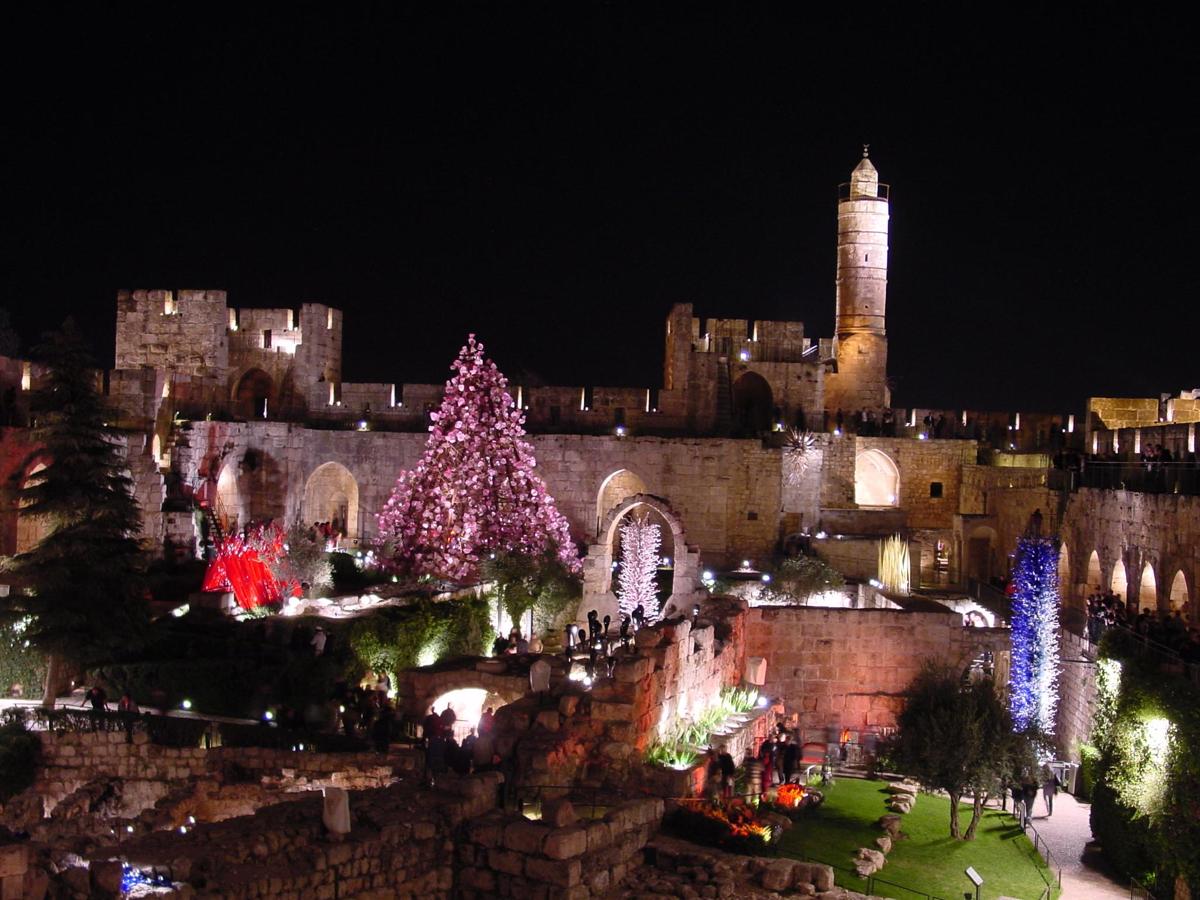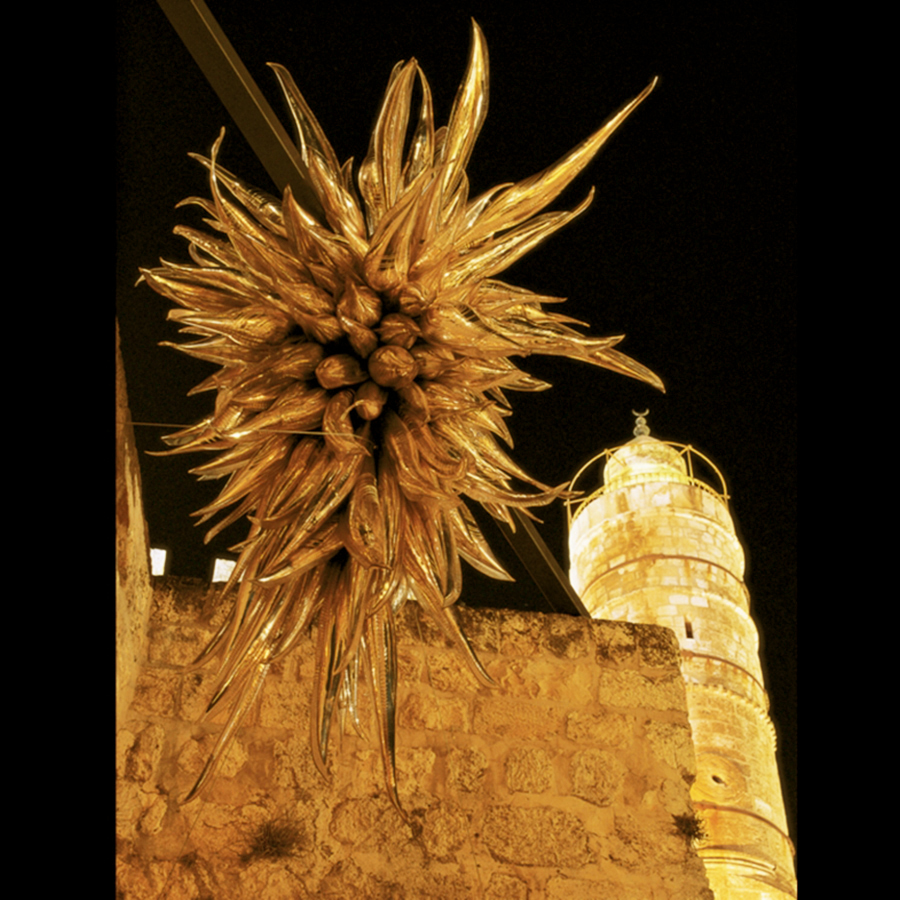December 25: The Word Became Flesh
♫ Music:
Day 23 - Monday, December 25
The Feast of Christmas
Title: The Word Became Flesh
Scripture: John 1:1-4
In the beginning was the Word, and the Word was with God, and the Word was God. He was in the beginning with God. All things were made through him, and without him was not any thing made that was made. In him was life, and the life was the light of men.
Poetry:
The Coming
By R.S. Thomas
And God held in his hand
A small globe. Look he said.
The son looked. Far off,
As through water, he saw
A scorched land of fierce
Colour. The light burned
There; crusted buildings
Cast their shadows: a bright
Serpent, A river
Uncoiled itself, radiant
With slime.
On a bare
Hill a bare tree saddened
The sky. many People
Held out their thin arms
To it, as though waiting
For a vanished April
To return to its crossed
Boughs. The son watched
Them. Let me go there, he said.
NO MERE BABY
Holding a baby in your arms is one of the most exceptional and tender moments we experience as humans, especially as parents. We extend our big fingers to wiggle those little fingers and toes with utter amazement. We feel wonder. We make strange noises and gestures to make the little one’s eyes catch ours and to receive a smile in return. We feel joy. Yet, as we clutch that baby, we soon confront the reality that this miniature human being is completely dependent on us for everything. Baby Jesus in the arms of Mary is every bit a baby like this...but more. The Gospel of John approaches Baby Jesus differently than the other gospels. The truths that he sets forth in John 1:1-4 are mind-blowing! Let’s consider three truths as we celebrate the birth of Jesus on this day.
Truth #1
“In the beginning was the Word, and the Word was with God, and the Word was God. He was in the beginning with God.” As Mary held Baby Jesus in those first few tender moments after his birth, there was no evidence that he was God…yes, God…and that he had actually existed forever…yes, forever. The truth in these two verses is utterly mind-blowing. John goes farther back than the beginning of his ministry (as in Mark’s gospel), farther back than the virgin birth (as in Matthew’s and Luke’s gospel), even farther back than creation…he goes back to eternity. He begins his gospel by acknowledging that Jesus is God and by locating him in relation to time, namely, before time. On this Christmas morn, let’s look beyond the little baby in a manger and worship our eternal God!
Truth #2
“All things were made through him, and without him was not anything made that was made.” As Mary held this little baby in her arms, there was no evidence that he was the Creator of everything that was made, but this little baby had not just been “made.” John’s words make it explicit and emphatic and crystal clear that anything in the category of made, this “little baby” made it. The straw in the manger, in which his parents laid him, was made by him. The world into which he was born was made by him. Again, this is mind-blowing! We cannot comprehend it. On this Christmas morn, let’s look beyond the little baby in the manger and worship our wonderful Creator!
Truth #3
“In him was life, and the life was the light of men.” As we envision Mary holding this little baby, who was dependent on her for everything, another truth emerges. In actuality, Mary is the one who is dependent on this little baby for everything. This little baby was the one who would bring the life she longed for, satisfy the hope of her faith in God, and fulfill the promises of a Redeemer for her nation and all nations. The promise, first made in Genesis 3:15, which had been the hope of people since the beginning of their separation from God, was being fulfilled in that moment. The seed of the woman would indeed crush the head of the seed of the serpent…that moment would soon come through this little baby. Again, this is mind-blowing! On this Christmas morn, let’s not just celebrate the birth of a baby. Let’s celebrate the hope of the nations and worship our amazing Redeemer!
Prayer:
Thank you, Baby Jesus, for being our eternal God, our wonderful Creator, and our amazing Redeemer. We bow before You with gratitude for who You are and what You have done as we celebrate your birth on this day. In your precious name we pray,
Amen.
David Talley
Chair, Old Testament Department
Faculty Athletics Representative
About the Artwork:
The Light of Jerusalem 2000
Dale Chihuly
Installation of glass sculptures (3 images)
Tower of David
Jerusalem, Israel
As a tribute to the new millennium, American glass sculptor Dale Chihuly led a team including Americans, Israelis, and Palestinians in mounting sixteen large-scale sculptural installations in Jerusalem’s ancient Tower of David for the 2000 millennium celebration. The exhibition, which was built specifically for the site, was the largest that Chihuly has ever produced. In order to build the exhibition, 10,000 pieces of glass were transported from Japan, the United States, and Finland. Thirty assistants, including glass blowers, engineers and a technical team, arrived in Israel with Chihuly, and together with a local team, built the exhibition over a number of weeks. The exhibit was an unparalleled success with over 1.3 million visitors.
About the Artist:
Dale Chihuly (b. 1941) is an American glass sculptor. He was introduced to glass while studying interior design at the University of Washington. He then enrolled in the first glass program in the country, at the University of Wisconsin. Chihuly continued his studies at the Rhode Island School of Design (RISD), where he later established a glass program and taught for more than a decade. In 1968, after receiving a Fulbright Fellowship, he went to work at the Venini Glass Factory in Venice, Italy. In 1971, Chihuly cofounded the Pilchuck Glass School in Washington State. Chihuly’s work, which has been on the forefront of the development of glass as a fine art, is included in more than 200 museum collections worldwide. He has been the recipient of many awards, including twelve honorary doctorates and two fellowships from the National Endowment for the Arts. Inspired by nature and the environment, Chihuly integrates many of his larger sculptures with the natural landscape and the architecture of ancient buildings.
About the Composer:
Arnold Franz Walter Schoenberg (1874–1951) was an Austrian composer, music theorist, and painter. He was associated with the expressionist movement in German poetry and art, and leader of the Second Viennese School. With the rise of the Nazi Party, Schoenberg's works were labeled as “degenerate music,” because they were modernist and atonal. He emigrated to the United States in 1934. Schoenberg's approach, both in terms of harmony and development, has been very influential in 20th-century musical theory. Schoenberg was also a painter of considerable ability, whose works were considered good enough to be exhibited alongside those of painters Franz Marc and Wassily Kandinsky. Composed for his family to play together on Christmas morning, Schoenberg’s delightfully tonal “Weihnachtsmusik” features melodies of several beloved carols, most predominantly the traditional German carol “Lo, How a Rose E’er Blooming.”
About the Performer:
Andrew Parrott (b. 1947) is a British conductor, perhaps best known for pioneering "historically informed performances" of pre-classical music. He conducts a wide range of repertoire, including contemporary music. He conducted the premiere of Judith Weir's A Night at the Chinese Opera. He has also recorded new music by other modern British composers including John Tavener and Vladimír Godár. In 1973, he founded the Taverner Choir, Consort and Players, a "period instruments" ensemble based in London, England. Towards the end of 1973, he began conducting the early music group Musica Reservata, also based in London. Currently, Parrott is music director of the New York Collegium, an ensemble of players and singers dedicated to the music of the Baroque era, in New York City, New York.
About the Poet:
R. S. Thomas (1913–2000) was a Welsh poet and Anglican priest who was noted for his nationalism and spirituality. Almost all of Thomas's work concerns the Welsh landscape and people with themes of both political and spiritual subtext. His early works focus on the personal stories of his parishioners, the farm labourers, and working men and their wives; challenging the romantic view of the traditional pastoral poem with harsh and vivid descriptions of rural existence. This direct view of "country life" came as a challenge to many English writers writing on similar subjects. Fearing that poetry was becoming a dying art, inaccessible to those who most needed it, Thomas “...attempted to make spiritually minded poems relevant within, and relevant to, a science-minded, post-industrial world," to represent that world both in form and in content even as he rejected its machinations.
About the Devotional Writer:
David Talley loves teaching the next generation of students the incredible and eternal truths of God in order to prepare them to impact the world for Jesus Christ. Outside of the classroom, he enjoys his family, exercising, cheering for the Alabama Crimson Tide, fishing, serving the church, and traveling internationally to help train the global church to complete the Great Commission.


